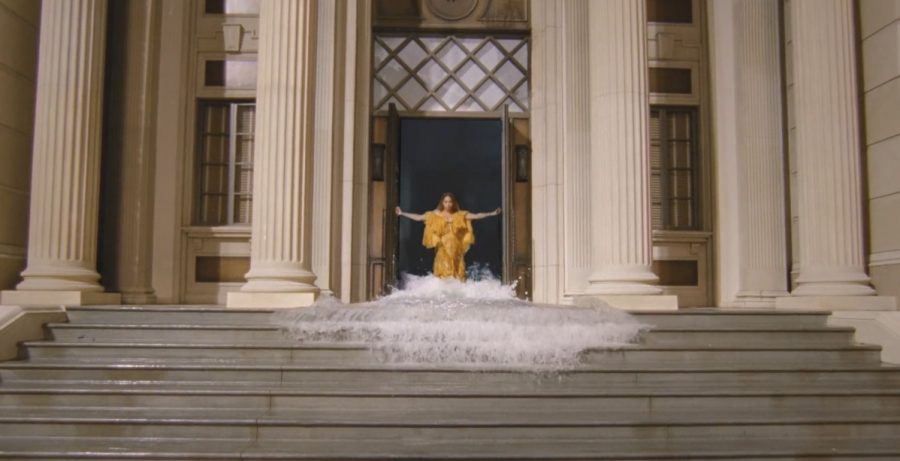You Can’t Kill Music Videos
April 6, 2017
 It seems like the easiest way to keep a trend alive is to pronounce it dead. For as many times as music videos have been pronounced defunct, they come back in yet bigger and newer ways. Since the era of the Beatles, who produced full-length films like “A Hard Day’s Night” for their album of the same name, to the debut of Michael Jackson’s 1983 “Thriller” music video on the fledgling MTV, music videos have been an experiment. They were promotional materials in many cases, but history has rewarded those who push the boundaries of film into the boundaries of music videos.
It seems like the easiest way to keep a trend alive is to pronounce it dead. For as many times as music videos have been pronounced defunct, they come back in yet bigger and newer ways. Since the era of the Beatles, who produced full-length films like “A Hard Day’s Night” for their album of the same name, to the debut of Michael Jackson’s 1983 “Thriller” music video on the fledgling MTV, music videos have been an experiment. They were promotional materials in many cases, but history has rewarded those who push the boundaries of film into the boundaries of music videos.
remember back a few years ago when it was said the music video was a dying art form? lol. now every shot is its own movie. pic.twitter.com/jYBJlmuEWF
— Ryan Bassil (@ryanbassil) March 31, 2017
“Thriller” shook its audience to the core when it was released. With a budget nearly 10 times what other videos of the time had, its 13-minute run time and narrative plot played by Hollywood stars, it was miles beyond anything that had been done before. Even today, musicians as prolific as Beyoncé cite “Thriller” as the inspiration for their own boundary-pushing projects. In Yoncé’s case, it was for her eponymous surprise album release in 2013, in which each song was accompanied by a brand-new music video. Unlike Beyoncé’s 2016 project “Lemonade,” a visual album that has a through-line across the entire film, her self-titled project is a series of intensely personal visual pieces that accompany the songs on the album, giving her fans a clearer glimpse into her mind than they could get with the music alone. She explained the decision in a set of five videos released in tandem with the project. “I see music,” Beyoncé said. “It’s more than just what I hear. When I’m connected to something, I immediately see a visual or a series of images that are tied to a feeling or an emotion, a memory from my childhood, thoughts about life, my dreams or my fantasies. And they’re all connected to the music.” Other artists have gone less into the artistic, expressive side of music videos, sticking with the branding and promotional side of the format, while still managing to push its boundaries. Young Thug made headlines with his video earlier this year for “Wyclef Jean” — a $100,000 affair that he never showed up for. The whole video features shots of B-roll that the director Ryan Staake, managed to get without Thugger, paired with text where he sardonically explains how the video was made. The video even superimposed dotted outlines of the rapper where he should have been in shots. The “Wyclef Jean” affair raises eyebrows about celebrity personalities and egos, but when this article was published, the video had more than 21 million views on YouTube when this article was published. Whether it was a planned stunt or a colossal failure, it definitely wasn’t a flop. After all, his record label representatives still allowed its release. This wasn’t some rogue move that Staake pulled in a surge of vindictive rage. Then there’s “Lemonade,” its predecessors and the projects it inspired. Short films of all stripes have become — if not a norm — not a surprise at least within the musical community. Grimes, on her European “AC!D REIGN” tour in 2016, created what W Magazine calls a seven-song “visual mixtape” of videos shot in Europe with her friend and fellow songstress Hana. The duo, along with Grimes’ brother Max Boucher, edited the footage together into “guerrilla-style” videos off her latest album “Art Angels.” The result is dreamy — not narrative but not disjointed, full of silken dresses and castles. Even Taylor Bennett, Chance the Rapper’s younger and equally talented brother, has hopped on the wagon with his short film “Broad Shoulders.” The project takes songs from his 2015 album of the same name and creates a 13-minute story that strikes all the emotional chords of a feature-length project. Bennett, in an email interview with Noisey, where the film was originally premiered, described his project as an attempt to inspire other artists akin to how he had been inspired. “I hope that the film inspires other artists to consider what can be possible when it comes to visual content while also opening up fans to a new way of experiencing their work,” Bennett said. All of this is to say that while MTV is no longer a 24-hour reel of popular music videos and the complaints about our shrinking attention spans will probably never cease, there is never going to be a death of the music video. Its boundaries will continue to push film and other formats. Whether by legends like Beyoncé with her constant innovation of the form or experimenters like Taylor Bennett and Sampha — who released his own short film with Kahlil Joseph on Apple Music March 31 — music creators will do what they have always done. They will create with every tool they can, and it will be amazing. A version of this article appeared in the Thursday, April 6 print edition. Email Hailey Nuthals at [email protected].

